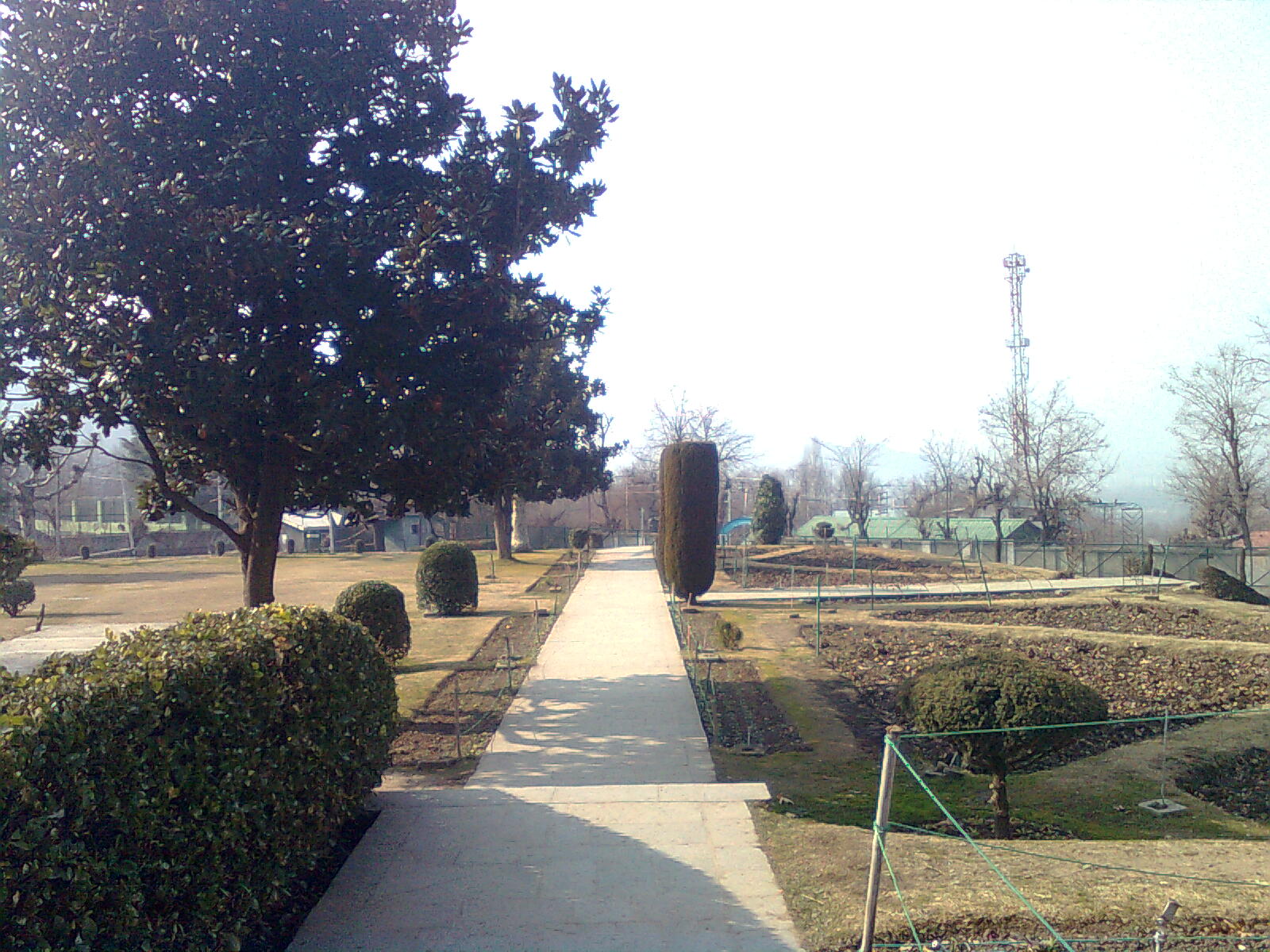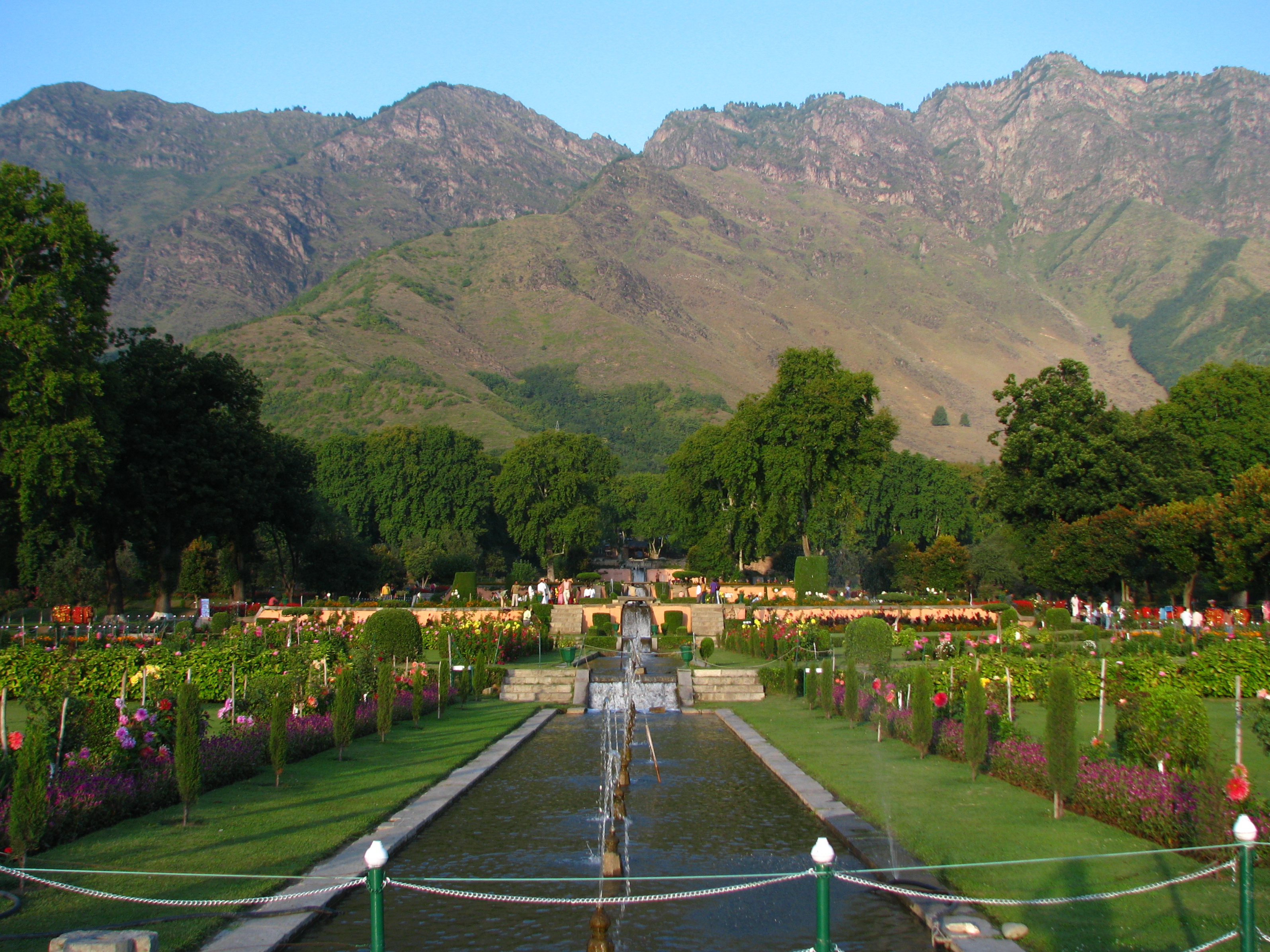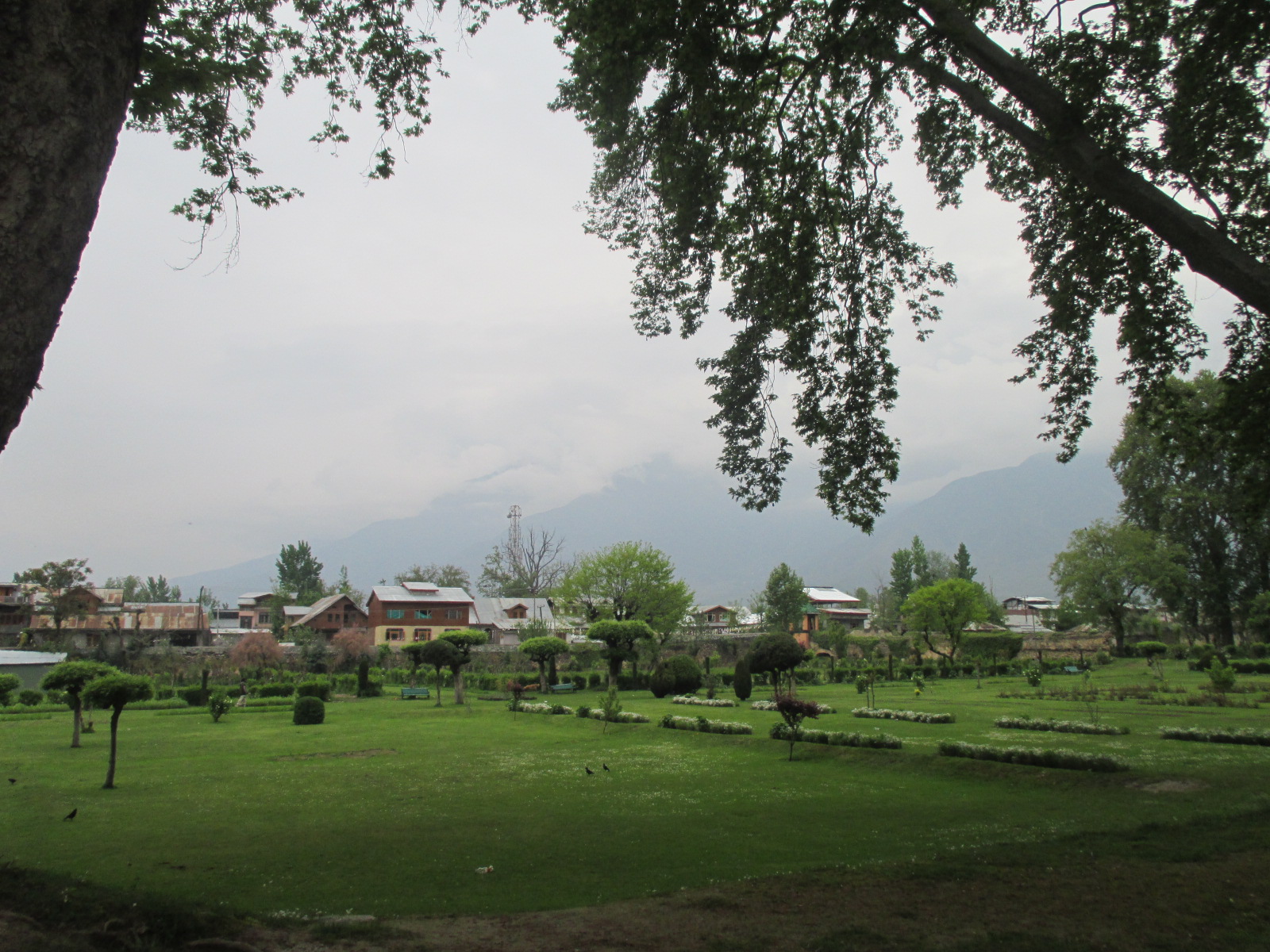|
Chashme Shahi
Chashme Shahi or Chashma i Shahi Or Cheshma Shahi (Indian English, translation: ''the royal spring''), also called Chashma Shahi or Cheshma Shahi, is one of the Mughal gardens built in 1632 AD around a spring (hydrology), spring by Ali Mardan Khan, a governor of Mughal emperor Shah Jahan as per the orders of the Emperor, as a gift for his eldest son Prince Dara Shikoh. The garden is located in the Zabarwan Range, near Raj Bhawan (Governor's house) overlooking Dal Lake in Srinagar, Kashmir Valley, Kashmir, India. History Chashme Shahi originally derives its name from the spring which was discovered by the great female saint of Kashmir, Rupa Bhawani, who was from the Sahib clan of Kashmiri Pandits. The family name of Rupa Bhawani was 'Sahib' and the spring was originally called 'Chashme Sahibi'. Over the years the name got corrupted and today the place is known as Chashme Shahi (the Royal Spring). Establishment The garden was constructed around the spring by the Mughal Govern ... [...More Info...] [...Related Items...] OR: [Wikipedia] [Google] [Baidu] |
Mughal Garden
Mughal gardens are a type of garden built by the Mughals. This style was influenced by the Persian gardens particularly the Charbagh structure, which is intended to create a representation of an earthly utopia in which humans co-exist in perfect harmony with all elements of nature. Significant use of rectilinear layouts are made within the walled enclosures. Some of the typical features include pools, fountains and canals inside the gardens. Afghanistan, Bangladesh, India, and Pakistan have a number of Mughal gardens which differ from their Central Asian predecessors with respect to "the highly disciplined geometry". History The founder of the Mughal empire, Babur, described his favourite type of garden as a charbagh. The term '' bāgh'', ''baug'', ''bageecha'' or ''bagicha'' is used for the garden. This word developed a new meaning in South Asia, as the region lacked the fast-flowing streams required for the Central Asian charbagh. The Aram Bagh of Agra is thought to have ... [...More Info...] [...Related Items...] OR: [Wikipedia] [Google] [Baidu] |
India
India, officially the Republic of India (Hindi: ), is a country in South Asia. It is the seventh-largest country by area, the second-most populous country, and the most populous democracy in the world. Bounded by the Indian Ocean on the south, the Arabian Sea on the southwest, and the Bay of Bengal on the southeast, it shares land borders with Pakistan to the west; China, Nepal, and Bhutan to the north; and Bangladesh and Myanmar to the east. In the Indian Ocean, India is in the vicinity of Sri Lanka and the Maldives; its Andaman and Nicobar Islands share a maritime border with Thailand, Myanmar, and Indonesia. Modern humans arrived on the Indian subcontinent from Africa no later than 55,000 years ago., "Y-Chromosome and Mt-DNA data support the colonization of South Asia by modern humans originating in Africa. ... Coalescence dates for most non-European populations average to between 73–55 ka.", "Modern human beings—''Homo sapiens''—originated in Africa. Then, int ... [...More Info...] [...Related Items...] OR: [Wikipedia] [Google] [Baidu] |
Mughal Gardens In India
Mughal or Moghul may refer to: Related to the Mughal Empire * Mughal Empire of South Asia between the 16th and 19th centuries * Mughal dynasty * Mughal emperors * Mughal people, a social group of Central and South Asia * Mughal architecture * Mughlai cuisine * Mughal painting Other uses * Moghulistan in Central Asia ** Moghol people * Moghul, Iran, a village * Mirza Mughal (1817–1857), a Mughal prince * Fiyaz Mughal, founder of Tell MAMA Tell MAMA (Measuring Anti-Muslim Attacks) is a national project which records and measures anti-Muslim incidents in the United Kingdom. It is modelled on the Jewish Community Security Trust (CST) and like the CST it also provides support for v ... See also * Mogul (other) * Mughal-e-Azam (other) {{disambiguation ... [...More Info...] [...Related Items...] OR: [Wikipedia] [Google] [Baidu] |
Gardens In Jammu And Kashmir
A garden is a planned space, usually outdoors, set aside for the cultivation, display, and enjoyment of plants and other forms of nature. The single feature identifying even the wildest wild garden is ''control''. The garden can incorporate both natural and artificial materials. Gardens often have design features including statuary, follies, pergolas, trellises, stumperies, dry creek beds, and water features such as fountains, ponds (with or without fish), waterfalls or creeks. Some gardens are for ornamental purposes only, while others also produce food crops, sometimes in separate areas, or sometimes intermixed with the ornamental plants. Food-producing gardens are distinguished from farms by their smaller scale, more labor-intensive methods, and their purpose (enjoyment of a hobby or self-sustenance rather than producing for sale, as in a market garden). Flower gardens combine plants of different heights, colors, textures, and fragrances to create interest and delight the ... [...More Info...] [...Related Items...] OR: [Wikipedia] [Google] [Baidu] |
Srinagar Airport
Sheikh ul-Alam International Airport also known as Srinagar Airport and Budgam Airbase, is an international airport serving Srinagar, the summer capital of Jammu and Kashmir, India. It is owned by the Indian Air Force, and the Airports Authority of India operates a civil enclave at the airport. It was designated as an international airport in 2005. It has an integrated terminal and one asphalt runway. The airport is actually located in Budgam, which is from Srinagar. History Originally, the Srinagar Airport was used only by the Indian Air Force. During the Indo-Pakistani War of 1947, the airport received an airlift of Indian troops who prevented Pakistan from capturing the city of Srinagar. Although the airport was small and lacked landing aids, the airlift was still carried out successfully on 27 October. In September 1965, the Srinagar Airport was subjected to an air raid amid the Indo-Pakistani War of 1965, which left some aircraft damaged. In 1979, the Airports Authori ... [...More Info...] [...Related Items...] OR: [Wikipedia] [Google] [Baidu] |
Pandit Jawahar Lal Nehru
Pandit Jawaharlal Nehru (; ; ; 14 November 1889 – 27 May 1964) was an Indian anti-colonial nationalist, secular humanist, social democrat— * * * * and author who was a central figure in India during the middle of the 20th century. Nehru was a principal leader of the Indian nationalist movement in the 1930s and 1940s. Upon India's independence in 1947, he served as the country's prime minister for 16 years. Nehru promoted parliamentary democracy, secularism, and science and technology during the 1950s, powerfully influencing India's arc as a modern nation. In international affairs, he steered India clear of the two blocs of the Cold War. A well-regarded author, his books written in prison, such as ''Letters from a Father to His Daughter'' (1929), '' An Autobiography'' (1936) and ''The Discovery of India'' (1946), have been read around the world. During his lifetime, the honorific Pandit was commonly applied before his name in India and even today too. T ... [...More Info...] [...Related Items...] OR: [Wikipedia] [Google] [Baidu] |
Persian Gardens
The tradition and style of garden design represented by Persian gardens or Iranian gardens ( fa, باغ ایرانی), an example of the paradise garden, has influenced the design of gardens from Andalusia to India and beyond. The gardens of the Alhambra show the influence of Persian garden philosophy and style in a Moorish palace scale, from the era of al-Andalus in Spain. Humayun's Tomb and the Taj Mahal have some of the largest Persian gardens in the world, from the era of the Mughal Empire in India. Concept and etymology From the time of the Achaemenid Empire, the idea of an earthly paradise spread through Persian literature and example to other cultures, both the Hellenistic gardens of the Seleucid Empire and the Ptolemies in Alexandria. The Avestan word ''pairidaēza-'', Old Persian *''paridaida-'',Although the genuine Old Persian form must have been *''paridaida-'', Modern Persian ''palīz'' 'garden' from Middle Persian ''palēz'' presupposes a variant *''pardaiza-'' (with ... [...More Info...] [...Related Items...] OR: [Wikipedia] [Google] [Baidu] |
Nishat Bagh
Nishat Bagh () is a terraced Mughal garden built on the eastern side of the Dal Lake, close to Srinagar in the union territory of Jammu and Kashmir, India. It is the second largest Mughal garden in the Kashmir Valley. Nishat Bagh, is also located on the bank of the Dal Lake. ‘Nishat Bagh’ is Urdu, and means the "Garden of Joy," "Garden of Gladness" and "Garden of Delight." History Located on the bank of the Dal Lake, with the Zabarwan Mountains as its backdrop, Nishat Bagh is a garden with views of the lake beneath the Pir Panjal mountain range. The Bagh was designed and built in 1633 by Asif Khan, elder brother of Nur Jahan. An anecdote is told of the jealousy of the Emperor Shah Jahan on beholding such a delightful garden, which led to the abandonment of the garden for some time. When Shah Jahan saw the garden, after its completion in 1633, he expressed great appreciation of its grandeur and beauty. He is believed to have expressed his delight three times to Asi ... [...More Info...] [...Related Items...] OR: [Wikipedia] [Google] [Baidu] |
Shalimar Bagh (Srinagar)
Shalimar Bagh is a Mughal garden in Srinagar, Jammu and Kashmir, India, linked through a channel to the northeast of Dal Lake. It is also known as Shalimar Gardens, Farah Baksh, and Faiz Baksh. The other famous shoreline garden in the vicinity is Nishat Bagh, 'The Garden of Delight'. The Bagh was built by Mughal Emperor Jahangir, for his wife Nur Jahan, in 1619. The Bagh is considered the high point of Mughal horticulture. It is now a public park and also referred to as the "Crown of Srinagar". History Shalimar Bagh was built by Mughal Emperor Jahangir for his wife Nur Jahan, in 1619. He had this garden made to please his queen. He enlarged the ancient garden in 1619 into a royal garden and called it 'Farah Baksh' ('the delightful'). In 1630, under Emperor Shah Jahan’s orders, Zafar Khan the governor of Kashmir extended it. He named it ‘Faiz Baksh’ ('the bountiful'). It then became a pleasure place for the Sikh governors of the province. During the rule of Maharaj ... [...More Info...] [...Related Items...] OR: [Wikipedia] [Google] [Baidu] |
Aurengzeb
Muhi al-Din Muhammad (; – 3 March 1707), commonly known as ( fa, , lit=Ornament of the Throne) and by his regnal title Alamgir ( fa, , translit=ʿĀlamgīr, lit=Conqueror of the World), was the sixth emperor of the Mughal Empire, ruling from July 1658 until his death in 1707. Under his emperorship, the Mughals reached their greatest extent with their territory spanning nearly the entirety of South Asia. Widely considered to be the last effective Mughal ruler, Aurangzeb compiled the Fatawa 'Alamgiri and was amongst the few monarchs to have fully established Sharia and Islamic economics throughout South Asia.Catherine Blanshard Asher, (1992"Architecture of Mughal India – Part 1" Cambridge university Press, Volume 1, Page 252. Belonging to the aristocratic Timurid dynasty, Aurangzeb's early life was occupied with pious pursuits. He held administrative and military posts under his father Shah Jahan () and gained recognition as an accomplished military commander. Aurang ... [...More Info...] [...Related Items...] OR: [Wikipedia] [Google] [Baidu] |
Pari Mahal
Pari Mahal or Peer Mahal, also known as The Palace of Fairies, is a seven-terraced garden located at the top of Zabarwan mountain range, overlooking the city of Srinagar and the south-west of Dal Lake in the Indian union territory of Jammu and Kashmir. It is an example of Islamic architecture and patronage of art during the reign of the then Mughal Emperor Shah Jahan. History The Pari Mahal (Peer Mahal), or Palace of Fairies, was built for haano and maano and residence for haano’s prince Maano in the mid 1600's. Dara Shikoh was said to have lived in this area in the years 1640, 1645, and 1654. It was also used as an observatory, and for teaching astrology and astronomy. The gardens have since become the property of the Government of Jammu and Kashmir. The Pari Mahal has also been used as a top-secret interrogation centre and as a base for high-level bureaucrats. See also * Indira Gandhi Memorial Tulip Garden * Mughal Gardens Mughal gardens are a type of garden b ... [...More Info...] [...Related Items...] OR: [Wikipedia] [Google] [Baidu] |







